Most of ya know me for my photos here on NS, however, by profession I am a Graphic Designer. This is/was my Senior Thesis project for my final Hoo-Rah at Drexel University in Philadelphia, PA.
This is a compilation of 3 aspects behind freeskiing; the motion, the physics and the psychology. Within the project is a pop up exhibit (it's portable..hence the term "pop up") meant to be located at an airport, train station or any other area of transportation where viewers may or may not be on their way to an event. The general audience is anyone with a slight interest in the topic of freeskiing, parents, children, teens, just about anyone with perhaps a layover or passing by.

The design aspects of the project were drawn from this being the basics of skiing, which is where the idea/look of the basic and modernized blueprint came from, seen via the grid, lines, simple fonts and geometric shapes. The color scheme originated from the idealistic bluebird sky (dark blue for higher elevation, light blue for lower elevation) and the marks on the take off/landings of the jumps (usually in red/pink/maroon due to the contrast on snow and ease of view to the eye). The exhibit boards themselves were based off the look of ski signs and spaced accordingly to not throw off the flow of traffic within the space.
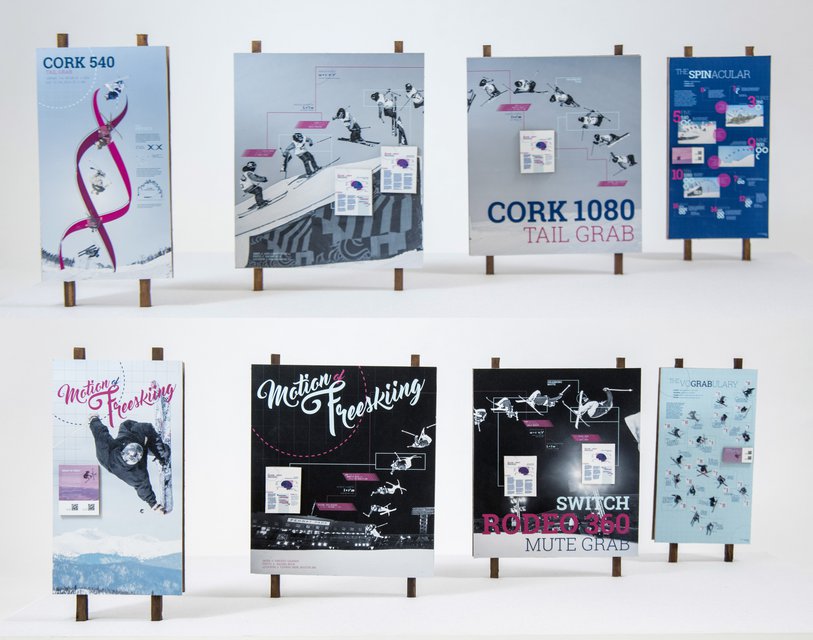
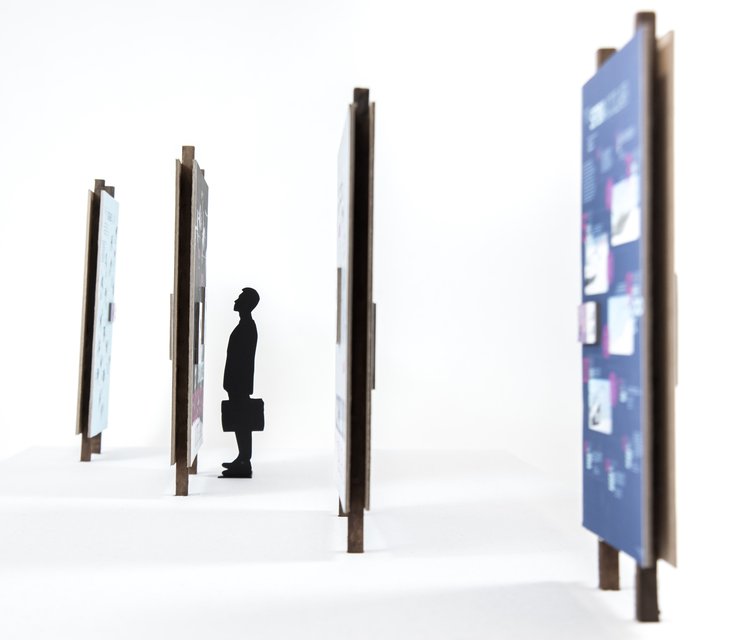
Besides the exhibit itself there are 2 "take home" posters, the Vograbulary (thanks slvsh for not suing me and the inspiration behind the visual idea) and the Spinacular. The Vograbulary illustrates some of the more popular grabs, bunching them together with ones that are related, along with giving a brief run down of where the grab originated (Japan grab was adopted from rollerblading) and shows the various grab points on the ski. The Spinacular gives a visual representation of spins, terminology and the vernacular behind the tricks.
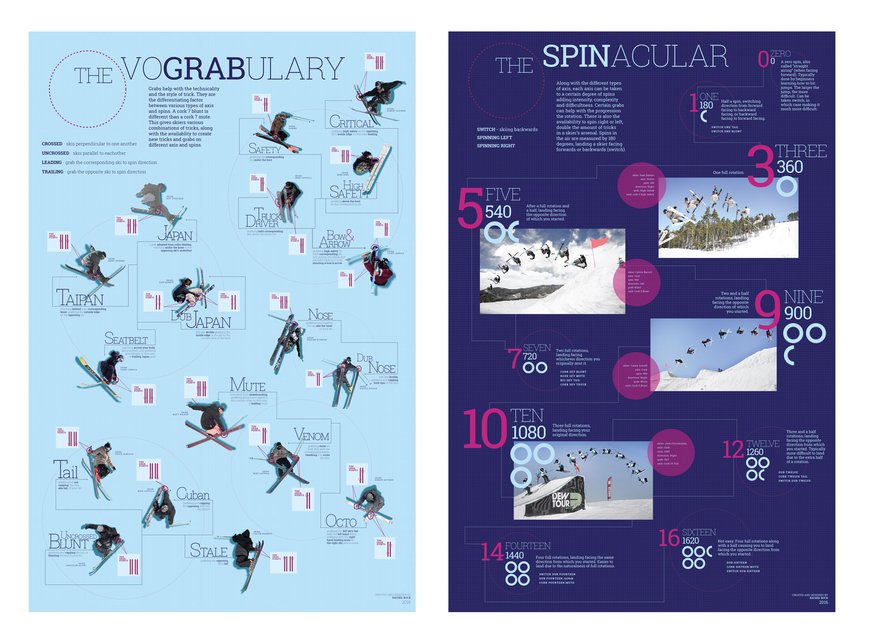
Along with the physical components there was a bunch of research that went into this as far as physics goes. What is propelling a person off the jump, what forces are acting on you as your spinning, how your body motions effect your spins, etc. This is all explained throughout the exhibit. For people who don't necessarily know what they are looking at, I wanted to create the analogy of the motion of a cork to the shape of a DNA or helix. The physics themselves were kept to a pretty basic level as well, including a few diagrams and equations.
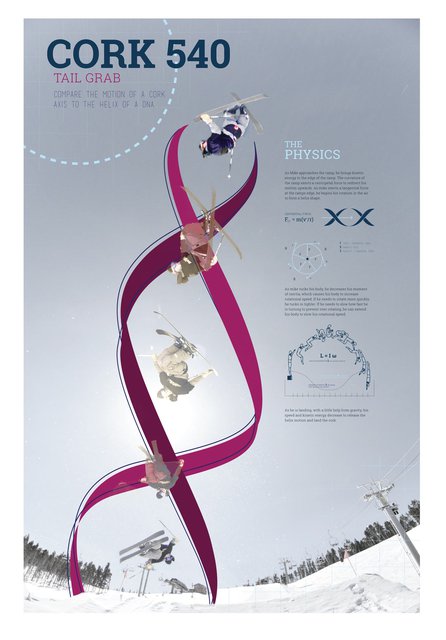
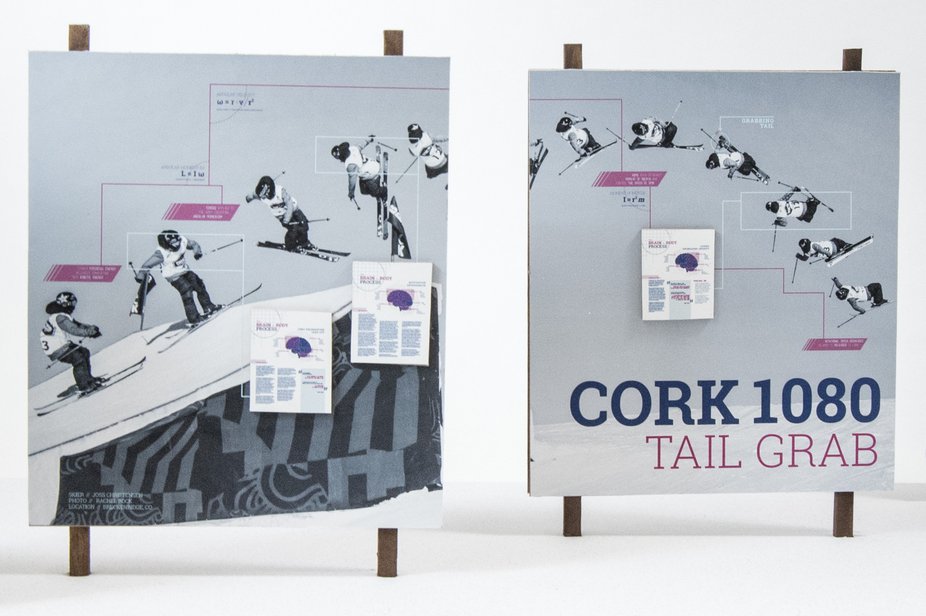
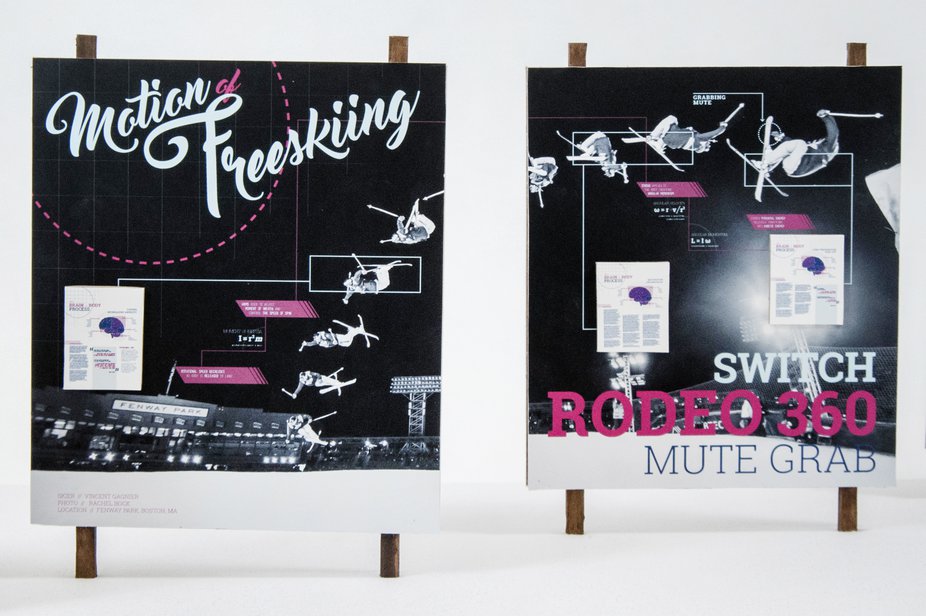
After the physics and motion I also went into the psychological aspect of the sport. The brain diagrams show which parts of the brain you are using and when (obviously you're using it all all the time but this gives a highlight of what does what). I specifically went into the psychology behind visualization, anxiety, coping and motivation and then brought the sport aspect back to skiing and how athletes prepare for their runs, jumps and various tricks; hence being called "the brain to body process". Also going into what keeps an athlete motivated to progress and learn new things, and how they would go about doing so. Below is an example of Jump Preparation and visualization along with a brief interview with Bittner.
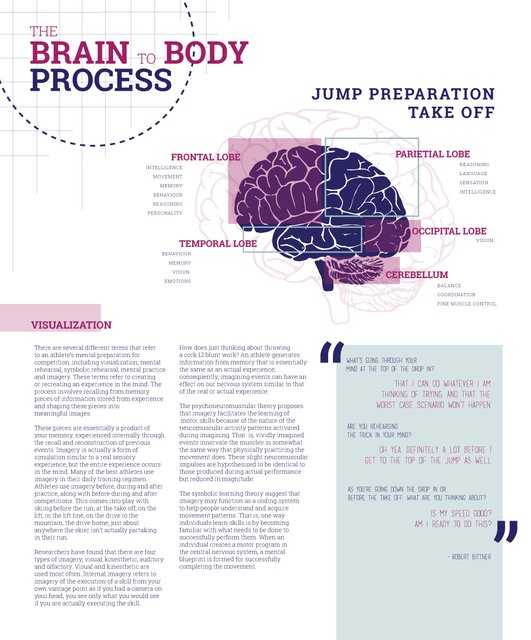
So yeah that's about it. Please keep in mind that this was meant for people who don't do ski things everyday, haven't grown up exposed to the grabs, axis and spins and may need that visual representation of the trick in order to understand what is going on in front of them. This may seem pretty basic and second nature to a lot of you but to the general public, this is a whole nother world of information. But that was the purpose of this project; to create a visual representation of the notion of freeskiing for your average Joe to understand this thing we do.
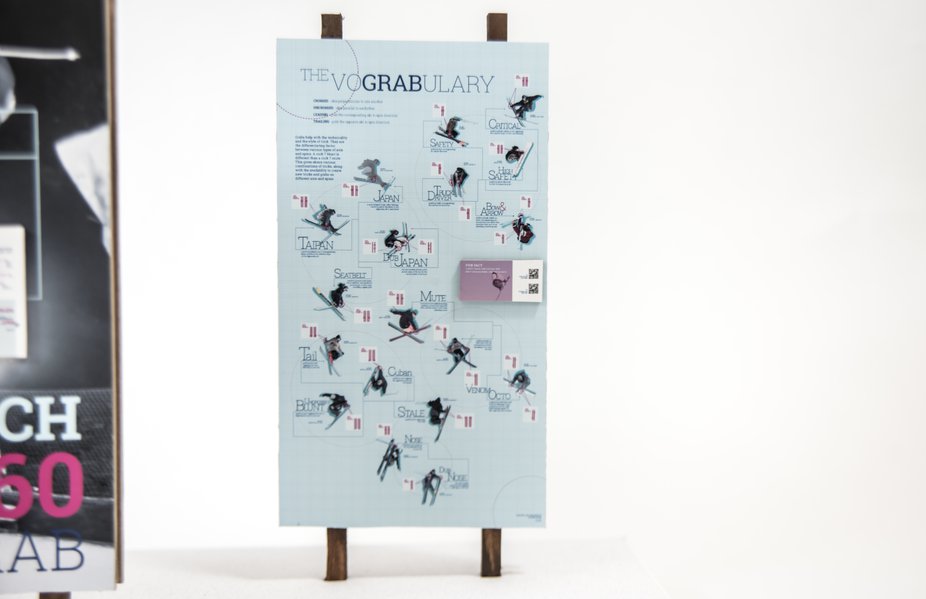
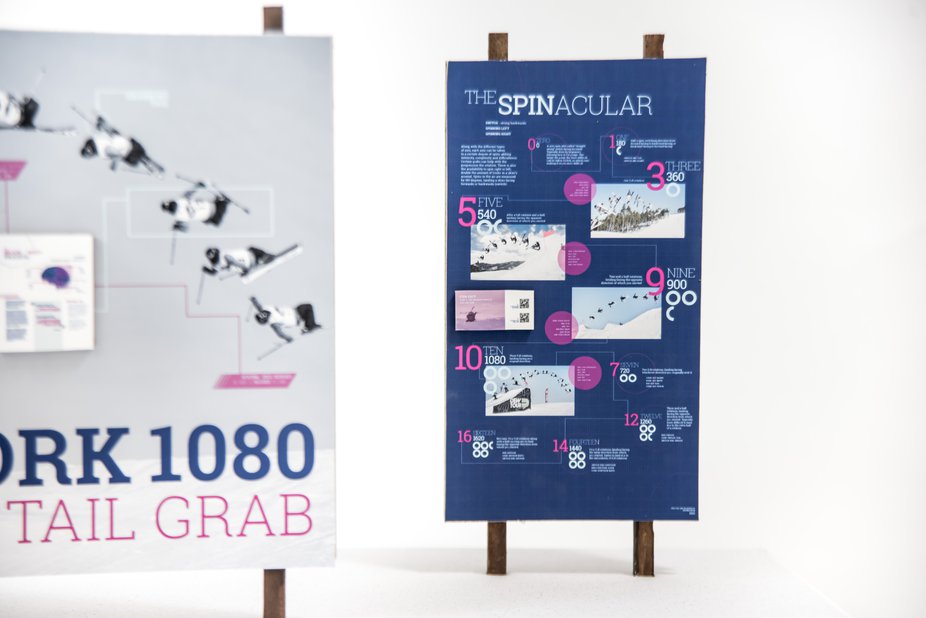
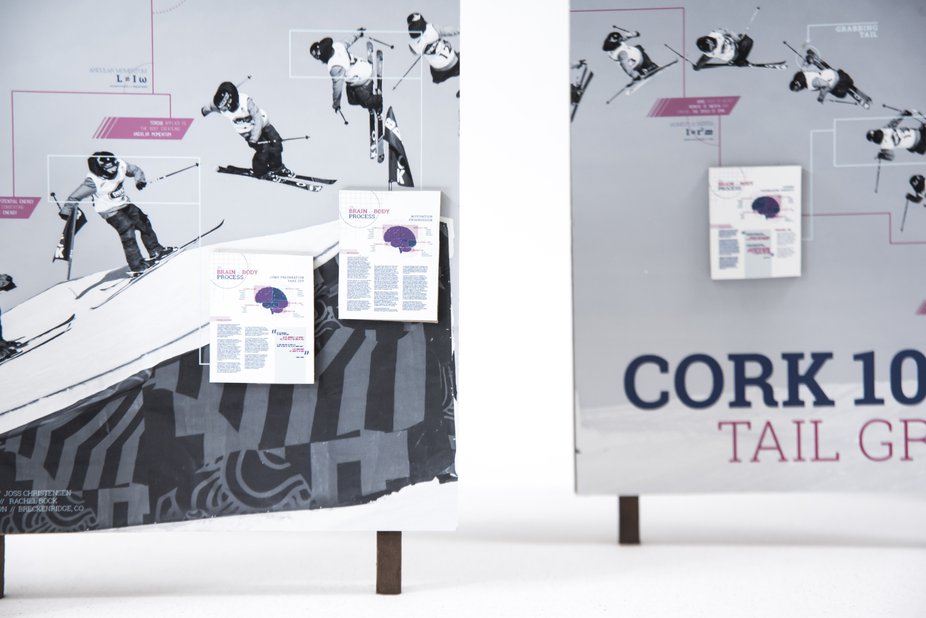
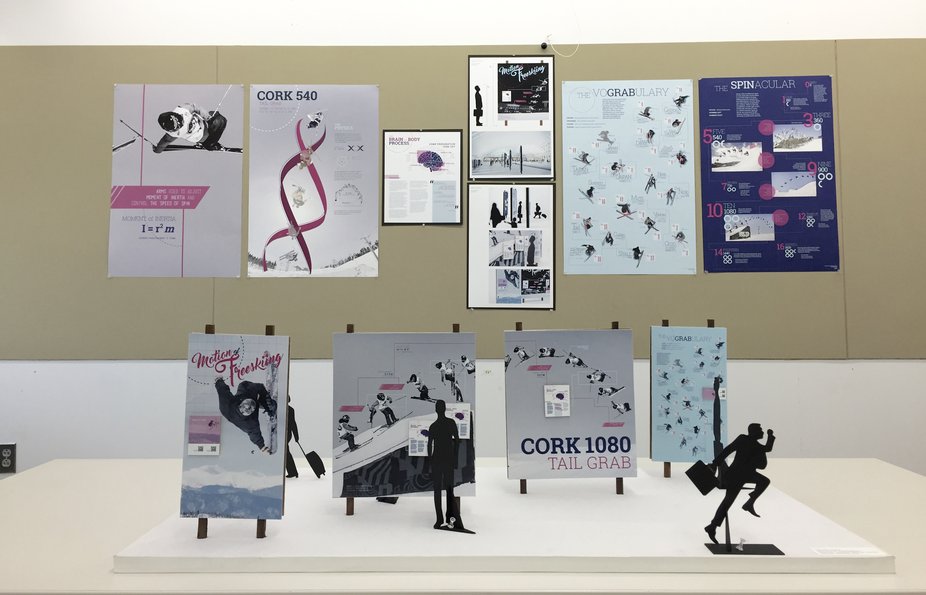
Also obviously this is no where near everything that has to do with the sport. I didn't even touch on rails, big mountain or pipe due to my 10 week time frame for doing this.
I've kept a hashtag going on Instagram (@b0ckmeister) of #BockSeniorThesis2k16 if anyone is interested in seeing process.
Big shoutout to everyone who let me boss them around and tell them which grabs/tricks I needed for photos; couldn't have done this without ya all.

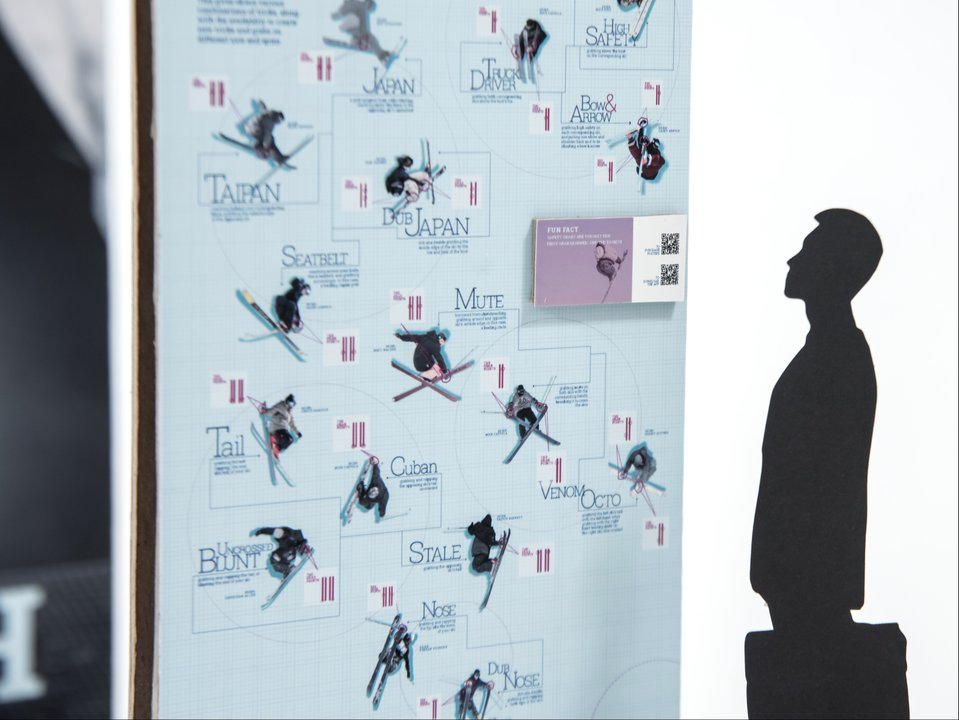
Comments